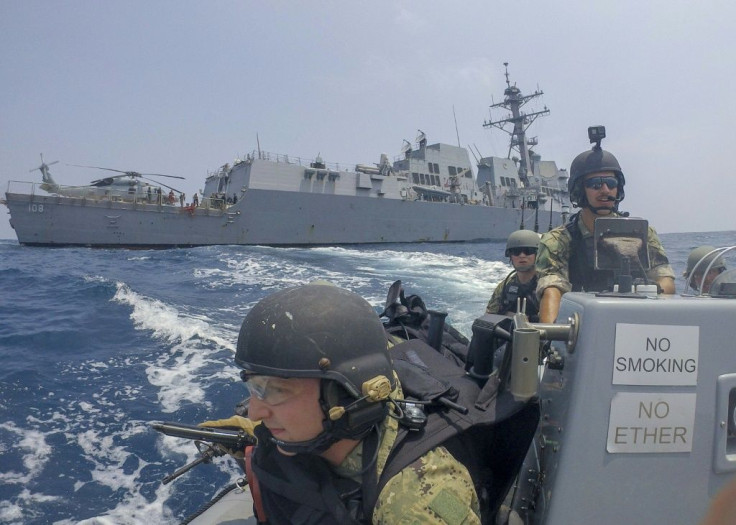China Has A Surveillance Blimp In South China Sea To Track Ships, Missiles

Images taken by a satellite in November indicate that China is using an unmanned airship, called an aerostat, presumably to gather information via a sensor system built within the aircraft. Deploying several of these could serve as a network to provide an early warning system against low-flying cruise missiles and more importantly, improve its situational awareness throughout the disputed regions in the South China Sea.
ImageSat International, a private intelligence firm based in Israel, released the imagery that shows the aerostat hovering over Mischief Reef in the Spratly Islands with its shadow clearly in view on the ground of the Chinese man-made island. China has been expanding in the area, one of the most hotly disputed territories in the South China Sea.
While it is impossible to tell from the photos the type and number of sensors used in the vessel, there are many advantages to its use:
- It is a low cost and capable method for monitoring activity around the general area.
- It can be used to alert surface-to-air and anti-ship missiles to engage in potential threats.
- Aerostats can achieve altitudes much higher than large mast-mounted ground-based radars. This will greatly increase the line-of-sight distance to the horizon.
- Compared to manned airborne sensor platforms, aerostat-mounted radar systems can hover for long periods and in most types of weather.
- They are easier to maintain than a conventional aircraft.
China has been playing the part of the “bully” in the South China Sea for many years in efforts to get at the oil, gas and mineral riches, gain strategic military footholds and take control of the important international waterway. None of the other Pacific Asian nations can stand up to China so the United States is the only other superpower that can balance the scale of power.
The U.S. has no territorial claims in the area, but it continues to maintain a military presence by conducting Freedom of Navigation Patrols, or FONOPs, which Washington regularly performs to challenge China's expansive and widely disputed territorial claims in the South China Sea and elsewhere.
China views the FONOPs differently. A statement from the People's Liberation Army's (PLA) Southern Theater Command said, "The U.S. has kept sending naval vessels to stir up trouble in the South China Sea under the pretext of freedom of navigation. We call on the U.S. to stop such provocative acts to avoid the happening of any mishap." Aerostats will undoubtedly be used to monitor U.S. activity in the region.
Both the U.S. and China have been developing aerostat technology for at least two decades. The U.S.’ Joint Land Attack Cruise Missile Defense Elevated Netted Sensor System, or JLENS, was a fiasco that cost billions of dollars since 1996 until the project was aborted in 2017. Since then the use of tethered aerostat surveillance systems may have found a niche providing surveillance on the U.S. southern borders.
If China continues to develop its man-made islands, the aerostats could prove to be quite an effective tool for them to keep tabs on the activities of the U.S. and other countries as it continues its quest to control the South China Sea.
© Copyright IBTimes 2024. All rights reserved.





















